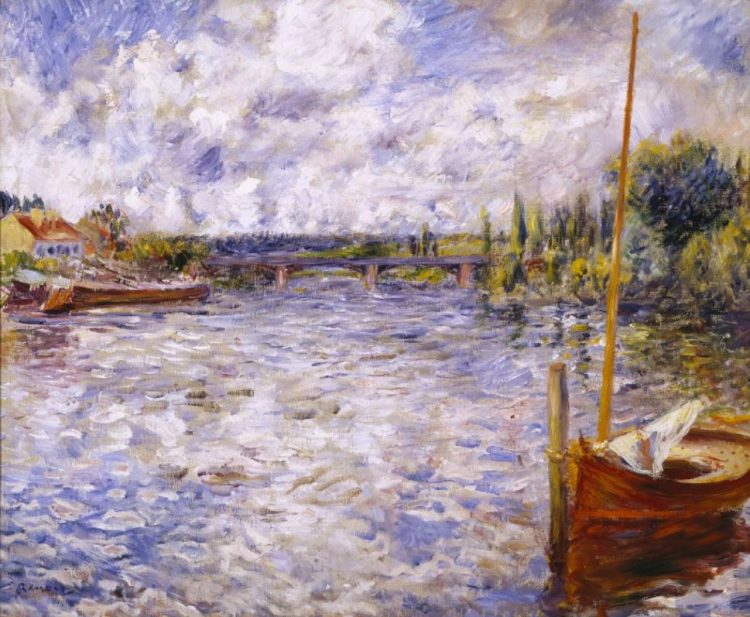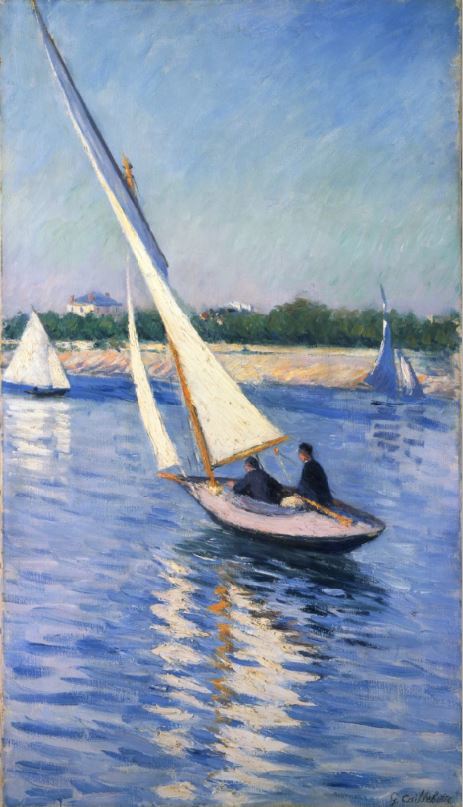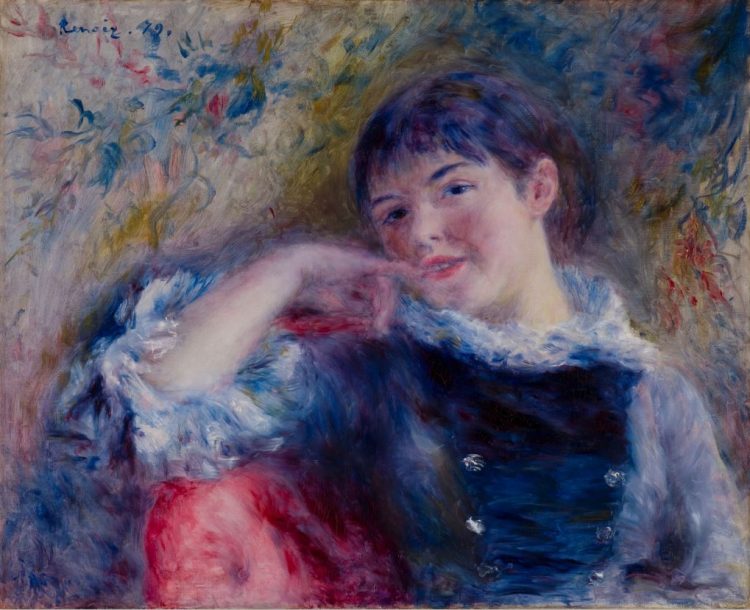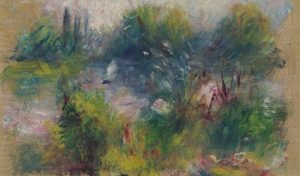Each week for the duration of the exhibition, we’ll focus on one work of art from Renoir and Friends: Luncheon of the Boating Party, on view October 7, 2017-January 7, 2018.

Pierre-Auguste Renoir, The Seine at Chatou (La Seine à Chatou), 1874. Oil on canvas, 20 × 25 in. Dallas Museum of Art, The Wendy and Emery Reves Collection
As early as 1869, Pierre-Auguste Renoir was exploring the banks of the Seine River west of Paris, seeking subjects for his developing Impressionist style, often painting outdoor landscapes with his friend Claude Monet. His mother lived near Louveciennes, not far from Chatou, where he would frequent the Maison Fournaise with its restaurant, lodging, and boats for hire. The Maison Fournaise would become the backdrop for his masterwork Luncheon of the Boating Party (1880-81), with members of the Fournaise family serving as models. In this lively rendering of a gusty day on the water, Renoir includes a sailboat, signaling in his painting the growing popularity of the sport.



